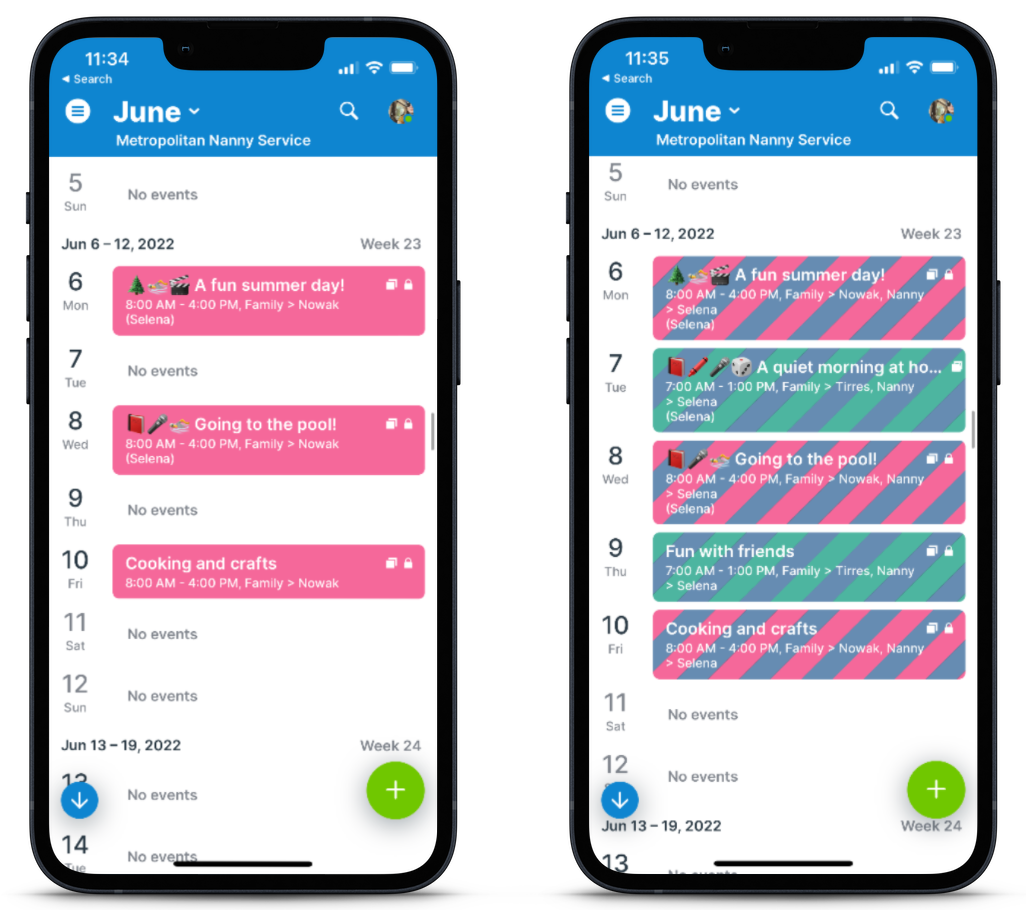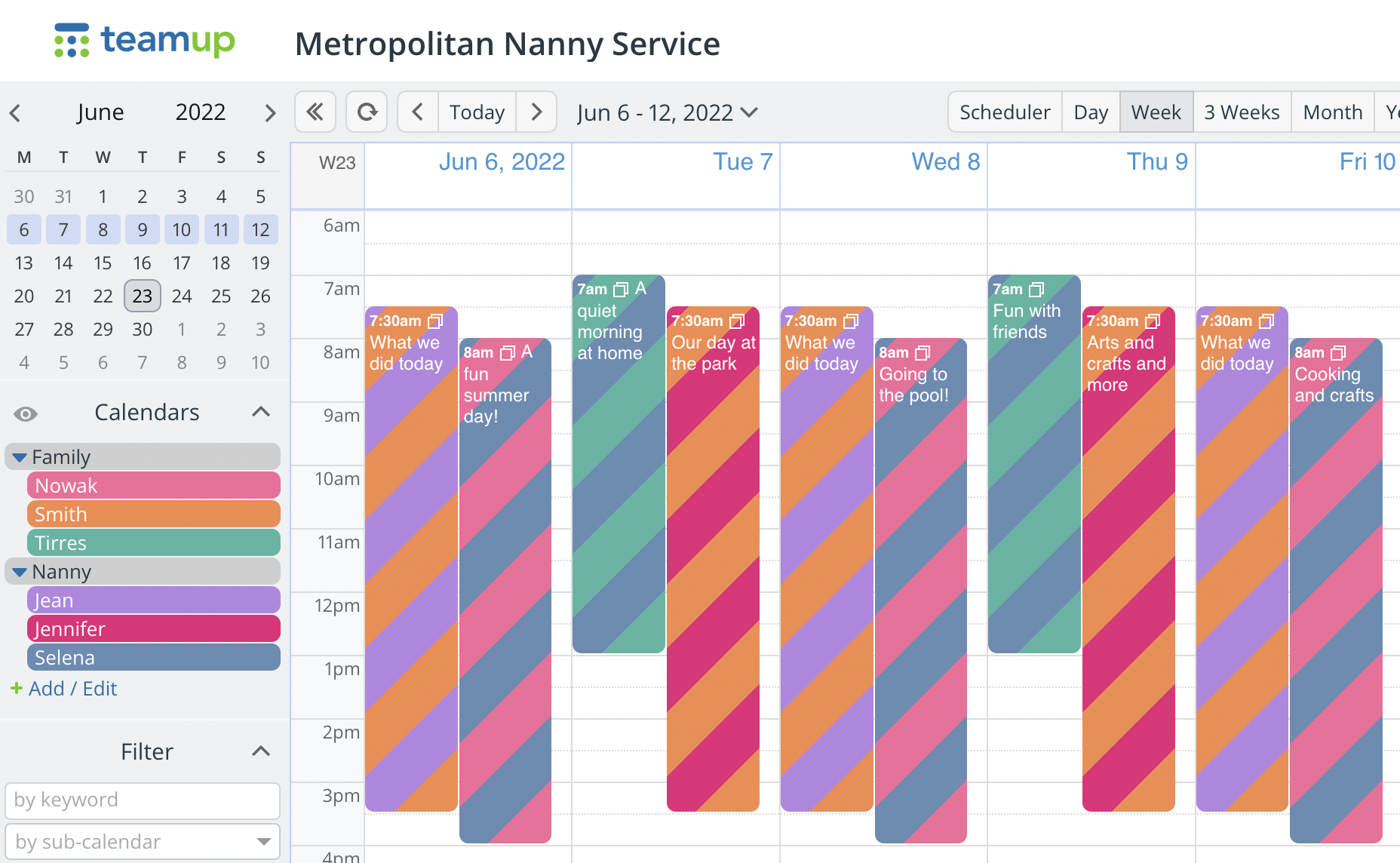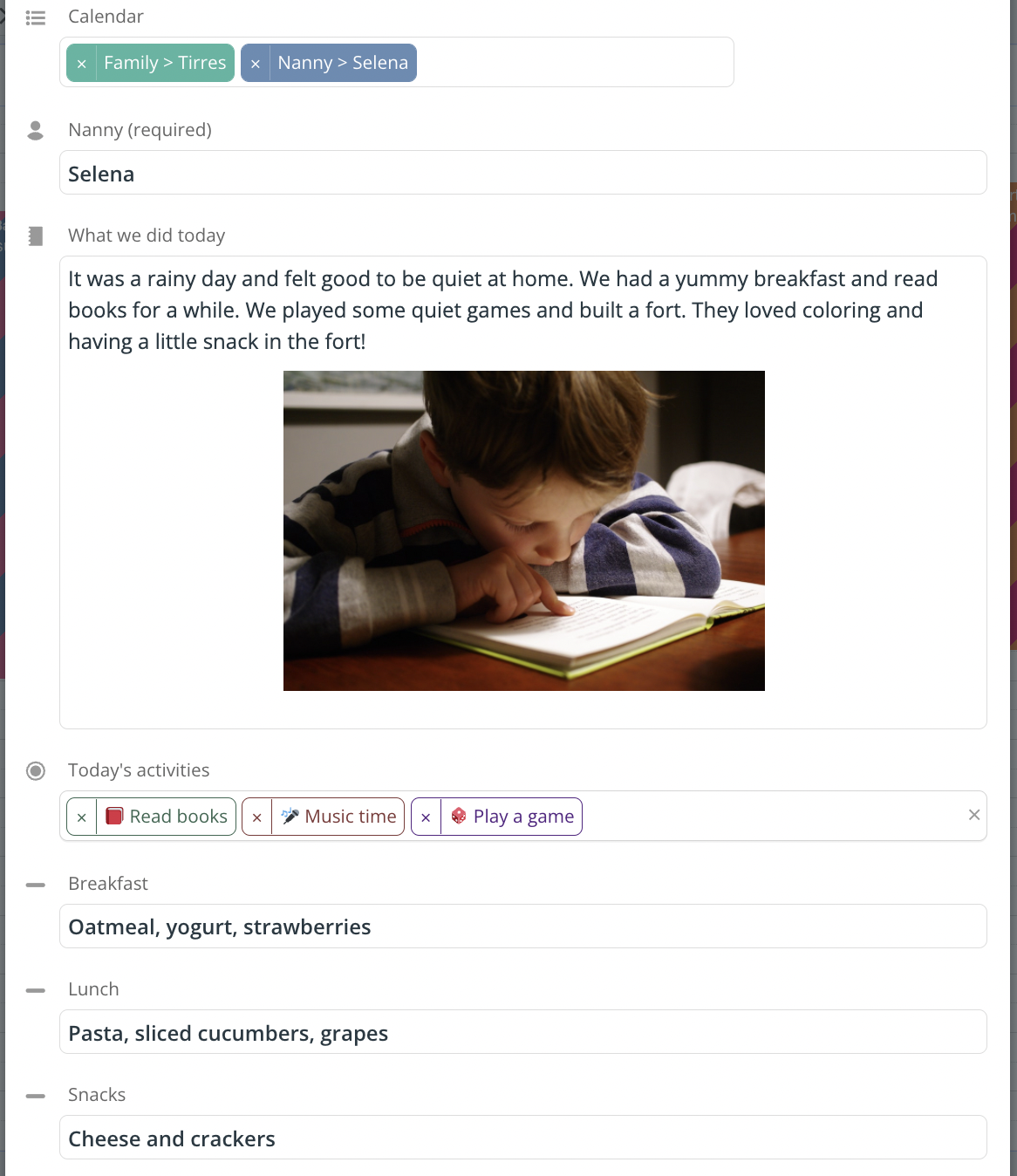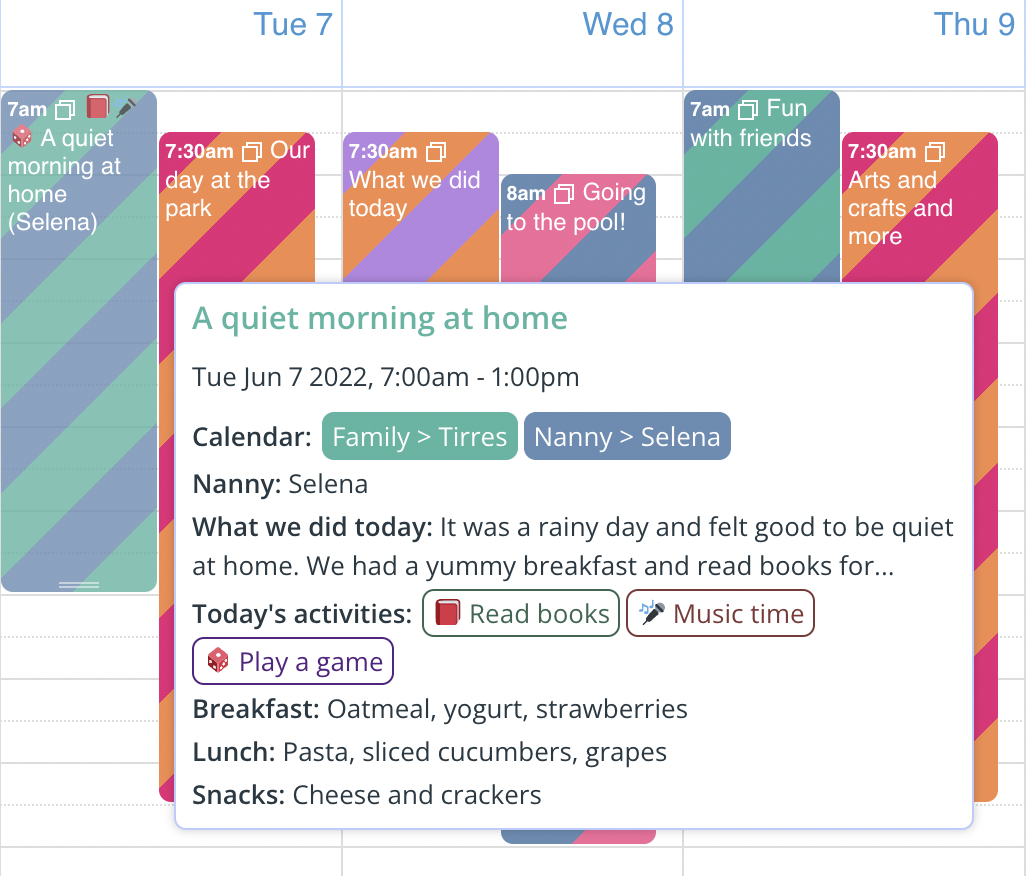A nanny journal, diary, or daily log is a tool often used by nanny services. Teamup is a great platform for a nanny journal. It’s customizable, secure, and easy to use. With mobile apps, nannies can update the daily journal anywhere, so details don’t get lost. You can set up precisely customized access for each family, and even make it accessible through the nanny services website.
Set up the calendar
First, set up the sub-calendar structure:
- Create one sub-calendar for each family using the nanny service. You can always archive these individual sub-calendars if a family is no longer using the nanny service.
- Create one sub-calendar for each nanny. You can use these sub-calendars for scheduling shifts and tracking time off or availability.
- If desired, organize all family sub-calendars in one folder and all nanny sub-calendars in another folder.
Configure customized access
We recommend setting up account-based access for better security. While you can share a calendar via shareable calendar links, this is a less secure method.
- Add each nanny as an account-based user to your calendar. Go to Settings > Sharing, then click on Add User. Enter the nanny’s email address. They will receive an email invitation to create a user account and access the calendar.
- Scroll down to configure the access by selecting which sub-calendars to share and setting the permission level for each one. For example, if Nanny Selena only works with Families Nowak and Tirres, she does not need access to the Smith Family calendar. She also does not need to see the other nanny’s sub-calendars. The Modify my events permission level allows Selena to add events and modify the events she creates, but she cannot modify or delete events created by anyone else.
Here’s how Selena’s access configuration would look:
- Repeat steps 1 and 2 for each nanny. When the nannies add a journal entry to the calendar, they can assign it to both the family calendar and their own sub-calendar as well. This is not absolutely needed but very helpful visually.

- Add each family as an account user and configure their calendar access appropriately. Generally this would be Modify my events permission on their family sub-calendar and Not Shared for all other sub-calendars. This way, each family will see only their own sub-calendar which contains the nanny journal for their child(ren).
Of course, you can adjust the way you share the calendar according to how you run the nanny service. For example, you might wish to share the nannies’ sub-calendars with families they work with, so they can see availability and make scheduling requests. Think through the simplest possible way to share the calendar, and start there. You can always reconfigure permissions if you want to try a different approach.
Use custom fields
Using custom fields is optional, but it can be very helpful. You can set up custom fields to make sure that each journal entry captures the important information. And, for items that are necessary, you can make the field required.
Here’s an example of a nanny journal entry using custom fields to capture the day’s activities and meals:
A few ways that custom fields work:
- Custom fields can be single-line text entry, single choice or multiple choice, or numerical data.
- You can have custom field contents show in the event title.
- For single or multi-choice fields, you can assign an emoji to each option; if desired, have the emoji show in the event title.
- You can sort calendar data by one or more custom fields.
When using the calendar in a browser, hover over any entry to see a preview of the details:
For a nanny journal, you might set up custom fields like this:
- Change the built-in Who field label to Nanny and make it required.
- Add multi-choice event fields for morning activities, afternoon activities, and evening activities.
- Add single-line text entry custom field for breakfast, lunch, snack, and dinner.
- Add a number field to capture the time spent napping or number of diaper changes.
Making a journal entry
 Teamup has free mobile apps for both iOS and Android, which can be helpful for capturing journal entries anytime. Each nanny would simply need to download the Teamup mobile app and log into their Teamup user account. The nanny calendar will appear on their dashboard automatically. Then, each day, they would simply add a journal entry to the appropriate calendar.
Teamup has free mobile apps for both iOS and Android, which can be helpful for capturing journal entries anytime. Each nanny would simply need to download the Teamup mobile app and log into their Teamup user account. The nanny calendar will appear on their dashboard automatically. Then, each day, they would simply add a journal entry to the appropriate calendar.
For example, on Tuesday the nanny named Selena is working for the Tirres family:
- After breakfast, Selena creates the day’s journal entry and records what the children ate. Later, she takes a cute photo of the kids playing outside and uploads it to the day’s entry. Before leaving, she updates the journal entry with all their morning activities and what the children had for lunch.
Reading the nanny journal entries

Since the calendar stays synced across devices, parents can see real-time updates. There are several easy ways to access the nanny journal and see the entries:
- Download and use the Teamup mobile app.
- View the nanny journal calendar on any browser by logging into their Teamup account.
- Access the nanny journal from the nanny services website. For example, if there is a diary button on the Nanny service website, or a family profile page, you can add a calendar link to the Diary or on each family’s profile page.
Get started with a live demo!
Try out a live demo to get a feel for all the features and possibilities you’ll have with a Teamup calendar. Demo calendars are Premium-enabled with administrator access, so you are free to explore and experiment with any relevant features before creating a custom solution for your needs. Please note live demo calendars will be deleted automatically, so do not use the demo calendar for your ongoing use.





